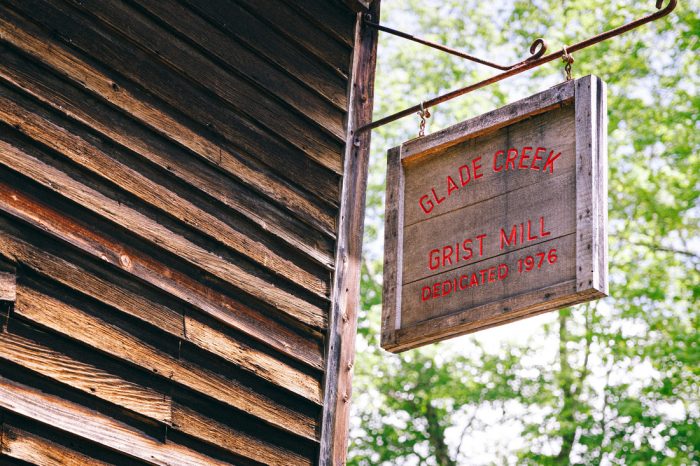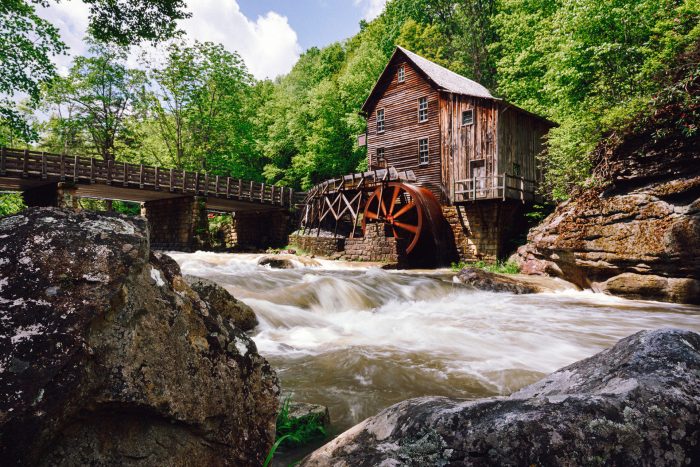Glade Creek Grist Mill: Babcock's world-class attraction
You’ve seen it pictured on calendars, mugs and coffee table books. It’s the Glade Creek Grist Mill — one of the most photographed images in the world.
Set on a boulder-strewn mountain stream at Babcock State Park, the weather-beaten mill offers a picturesque setting all four seasons for wedding photos and other memorable vacation shots.
But there’s more to this beautiful old structure than just Instagram-worthy material. It’s also a real working mill. During operating hours, visitors can tour the mill and learn about the process that grinds corn into cornmeal.

Patchwork quilt of mills
Milling is an occupation that died in the 1950s but nostalgia brought it back. The Glade Creek Grist Mill, built in 1976, serves as tribute to the hundreds of mills that once dotted the landscape in West Virginia.
It’s a replica of the original Cooper’s Mill that was located nearby, according to Stephen Tyree, the miller at Glade Creek.
“It’s the most photographed mill in the United States and it’s world renowned,” Tyree said, noting that the mill receives thousands of visitors each year from as far away as Europe and Asia.
Although it’s a relatively new mill, Glade Creek is a patchwork quilt of sorts, built with parts salvaged from much older mills that had ceased operation. Its main structure came from Stoney Creek Grist Mill in Pocahontas County, the water wheel came from Spring Run Grist Mill in Grant County and other parts came from Onego Grist Mill in Pendleton County.

Learning by doing
Tyree began working at the mill as a college student. He had applied to be the park naturalist but jumped when he was offered the job as miller. Having no experience was no deterrent for the determined man.
“I learned by doing,” he said. He ordered a textbook to use as a guide as he learned his way around operating the mill, and he’s happy to share his knowledge with the guests at Babcock.
The milling process begins by pouring dried, shelled corn into the hopper—the receptacle above the grindstone. Outside, a sluice gate controls the water flow from Glade Creek, turning the water wheel and setting in motion the gears that operate the 900 lb. grindstone. As the ground corn falls from the grain spout it’s filtered through a mesh screen, where the miller or his assistants use a bolting hammer to separate out the cornmeal.
But there’s one more step. Even if the customer brought his or her own corn to grind, the miller gets his cut.
“This is his toll,” Tyree said, brandishing a flat wooden paddle and raking it through the cornmeal. Whatever amount fits on the paddle—typically 8% to 10% of the haul—he gets to keep as his charge for grinding the corn.
If customers didn’t bring their own corn, they could still buy cornmeal from the mill, he added. But in these instances, money rarely changed hands.
“Back in the olden days, most people bartered because they didn’t have money,” Tyree said. “They’d trade milk, butter, eggs, vegetables, nails, lumber … whatever they had, for a sack of cornmeal.”
These days, you don’t have to barter. You can just purchase a bag of cornmeal from the park gift shop.
Recreation at Babcock includes fishing, boating and 20 miles of hiking trails. The mill, guest cabins and campgrounds are open seasonally.
Start planning your Almost Heaven getaway today!
Book Now